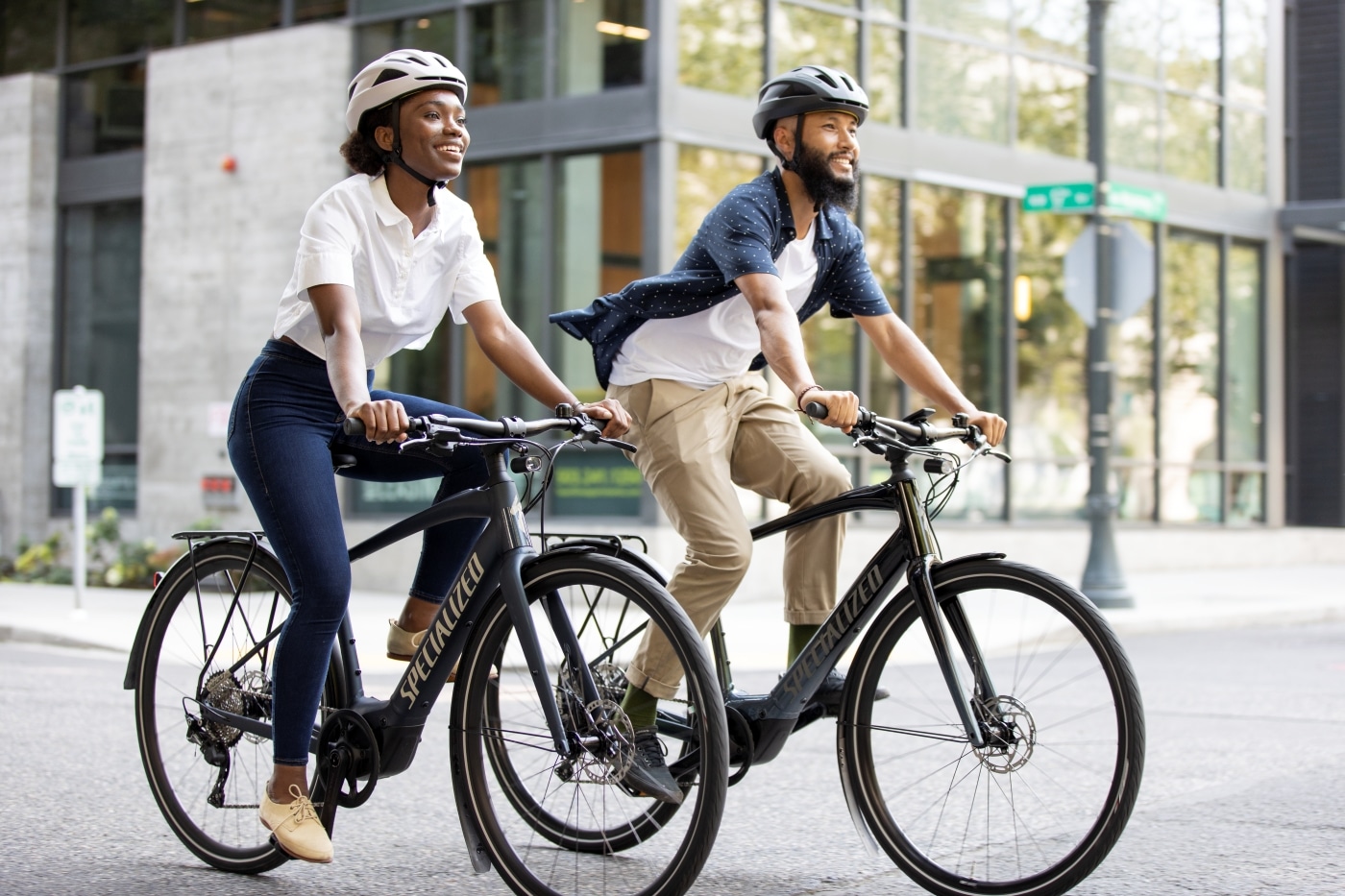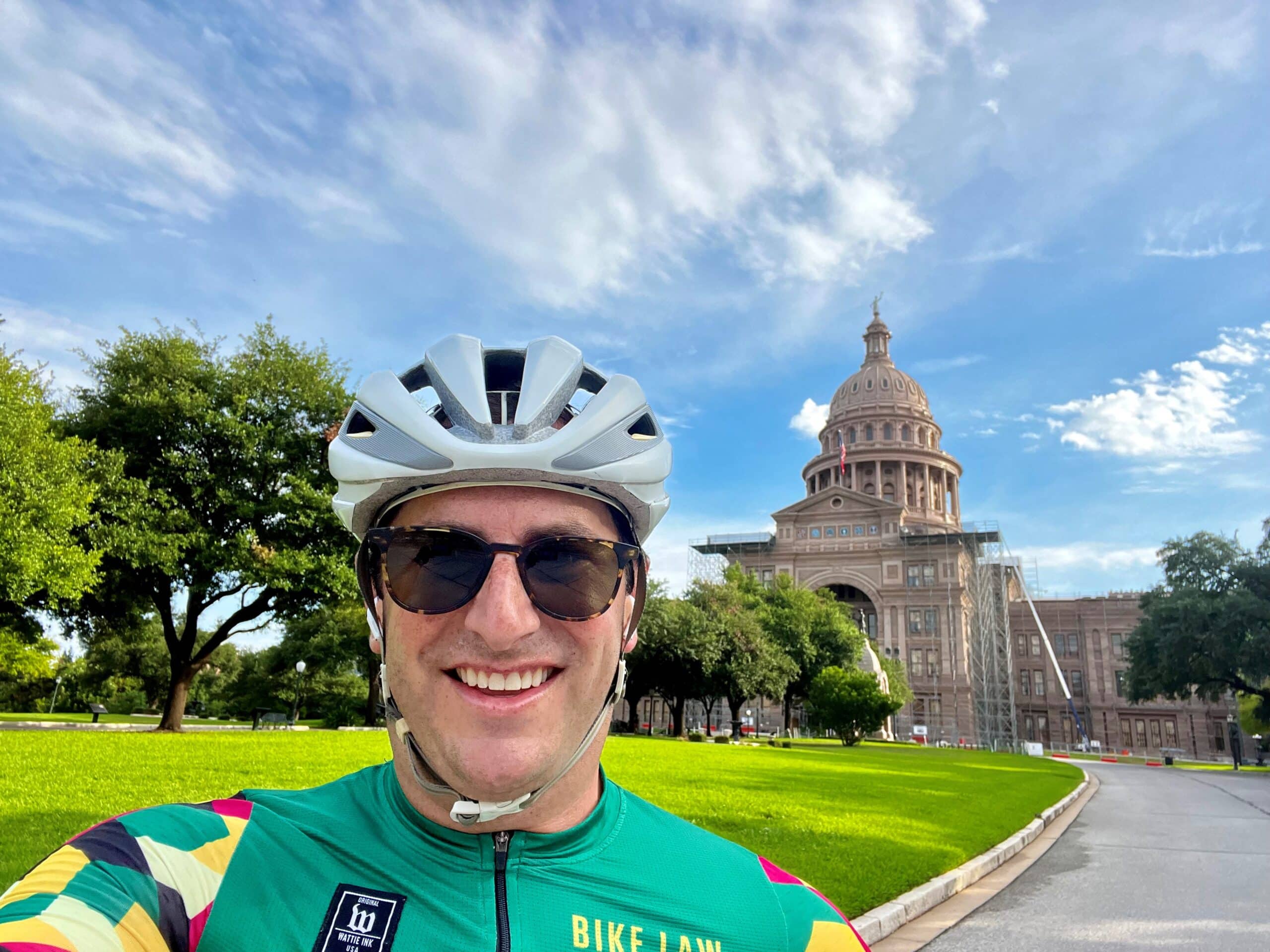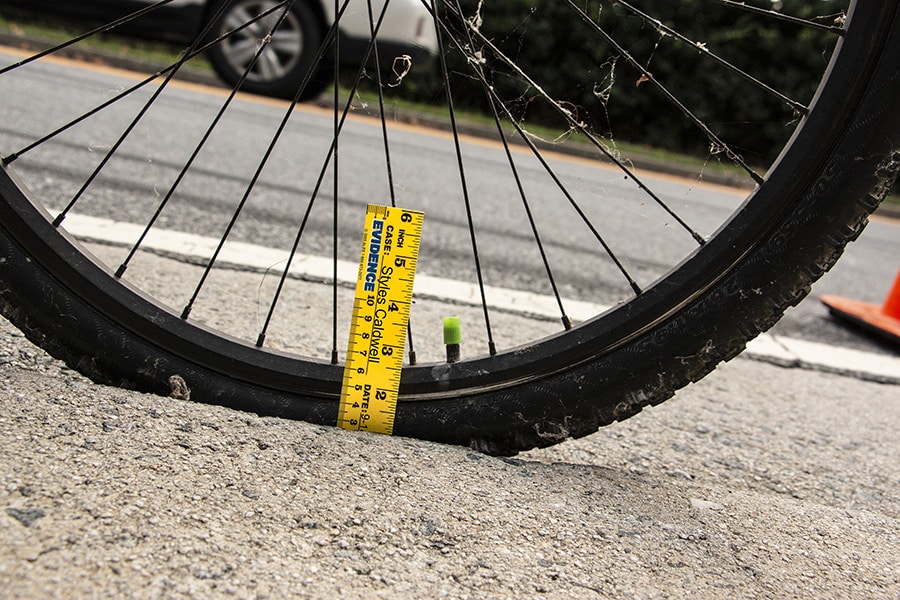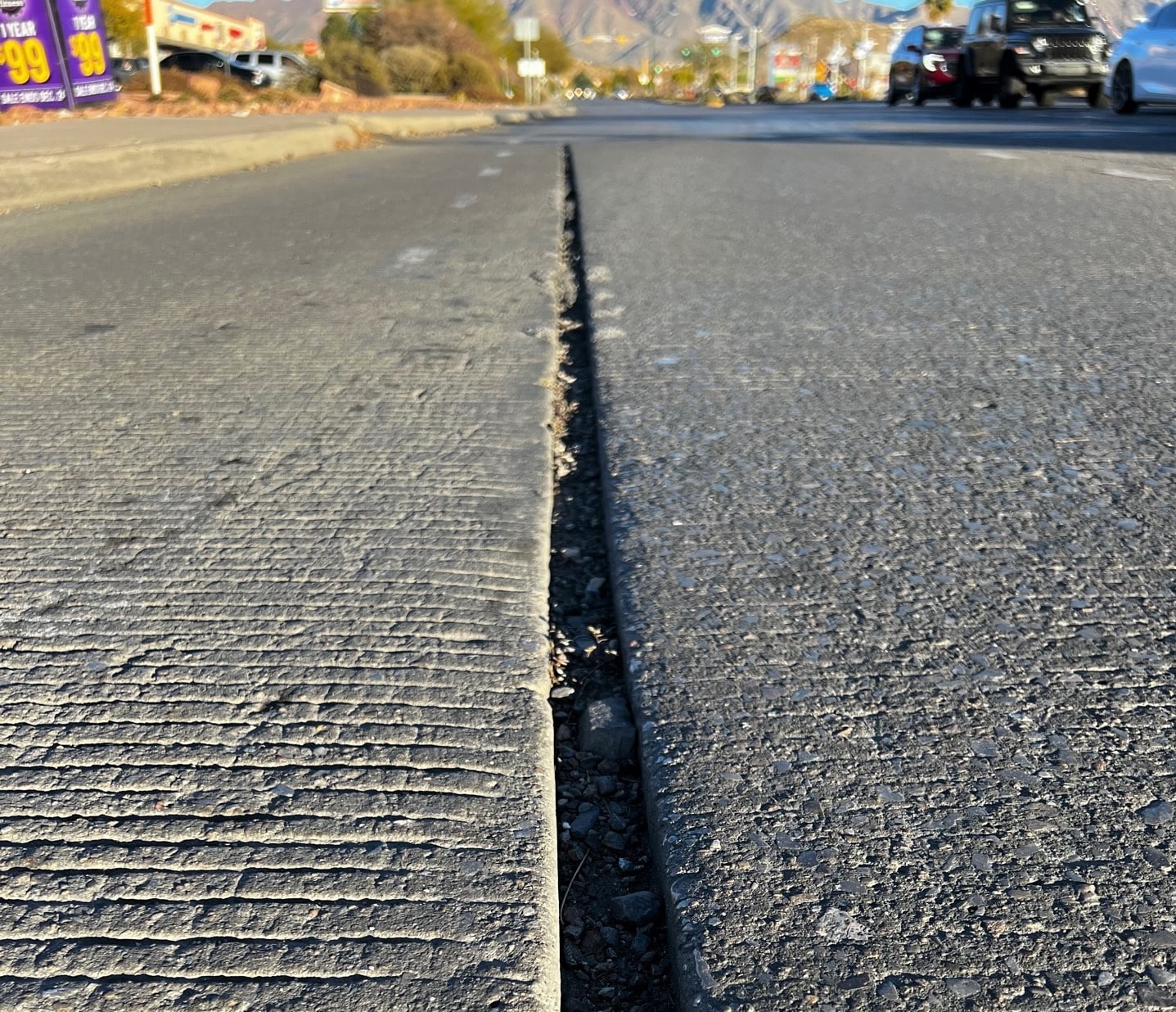Strengthen the Safe Passing Law
It’s a brand-new year; behind us, we have had an amazingly successful year, with not one, but two new laws that have significantly improved Oregon’s bicycle laws and brought real, positive change for Oregon’s cyclists. As probably everyone in Oregon has heard, it is now legal for cyclists to treat stop signs as yield signs in Oregon. And less noticed, but no less important, the Oregon legislature confirmed that bike lanes do indeed continue through the intersection.
But ahead of us, we have new opportunities to make Oregon’s Bicycle laws even better. And so, looking ahead, here is the first of 5 things we can do to make Oregon’s bicycle laws better.
Make Oregon’s Safe Passing Law Stronger
Until relatively recently, virtually every state had a safe passing law that directed drivers to pass cyclists at a “safe distance.” Unfortunately, “safe distance” is subjective, and entirely in the hands of the driver who is making the pass. Where one driver might give a cyclist a wide berth while passing, another might shave it to a foot or less—and both drivers would say their pass was “safe.” And both law enforcement and the driver who shaved it within a hair’s breadth would say that the pass was “legal” because the driver didn’t actually hit the cyclist.
And yet any cyclist who has ever been buzzed—virtually all of us—knows just how unsafe those buzzes can be. All it takes is one slight miscalculation by the driver, or one startled reaction by the cyclist, and an unsafe pass becomes a collision, sometimes fatal. And to make matters worse, the driver will often blame the cyclist for the collision, saying that the cyclist inexplicably swerved into the driver’s path at the last moment. This shifting of the blame to the cyclist happens often enough that it has its own acronym: SWSS, meaning “Single Witness Suicide Swerve.” It’s one of the classic Get Out Of Jail Free cards that drivers pull after they injure or kill a cyclist.
In response to this dangerous, often aggressive driver behavior, followed by all-too-predictable victim-blaming, a movement to get state legislatures to specify a minimum safe passing distance arose. Many states have now passed a minimum safe passing distance law. In most states, the focus has been on establishing a minimum number of feet, typically three feet, for a pass to be considered “safe,” and therefore legal.
But Oregon has a Minimum Safe Passing Distance law that is unlike any other. Instead of specifying the minimum number of feet necessary to make a safe passing distance, the minimum safe passing distance in Oregon is the distance the driver would need to avoid hitting a cyclist if the cyclist were to fall into the driver’s lane of traffic.
Oregon’s law is different from other state laws because it arose as a response to a fatal collision. In 2006, Jane Higdon, a nutrition researcher and triathlete, was riding with three other cyclists in Eugene when one of the cyclists riding ahead of her fell. While attempting to avoid hitting the fallen cyclist, Higdon was struck by a passing logging truck and killed.
In response to her tragic death, legislation was passed that requires drivers who are passing cyclists to give the minimum safe passing distance the driver would need to avoid hitting a cyclist if the cyclist were to fall into the driver’s lane of traffic.
This is a unique approach to establishing a minimum safe passing distance, and tends to be popular with Oregon cyclists. But as with any law, the devil is in the details, and Oregon’s safe passing law is not without its problems. And to make matters worse, there are several exceptions to the safe passing requirement that weaken the law to the point that there often isn’t a minimum safe passing distance. Oregon’s law can be and should be strengthened to make our roads safer for cyclists. Here’s what we can do to strengthen Oregon’s safe passing law.
1. Clarify what the minimum safe passing distance actually is.
Oregon’s safe passing law requires what is probably the most generous safe passing distance in the nation—and probably in the world. And Oregon cyclists tend to love that generous safe passing distance.
But there’s a problem with the minimum safe passing distance—nobody knows what that safe passing distance is. Oregon’s law is not only the most generous safe passing law on in the nation, it’s also the most confusing safe passing law—and that needs to change.
Here’s why. When a driver is passing a cyclist in Oregon, the driver must pass at a distance that would enable the driver to avoid hitting the cyclist if the cyclist were to fall into the driver’s lane of traffic. OK, so what distance is that?
Let’s try to calculate. Suppose you’re driving, and up ahead is a cyclist. And let’s suppose the cyclist is an average height American male. That would make the cyclist 5’9” tall. So what’s the fall-over distance? To calculate that, you need to know the cyclist’s height, inseam length, the bicycle’s crank length, bottom bracket height, seat post and saddle height…Let’s try a rough calculation. At a height of 5’9”, let’s guess that the cyclist’s fall-over distance is about 77 inches—and that’s just a rough estimation of the length of the cyclist and bicycle, measured straight from the cyclist’s tire track. Well, what about skidding when the cyclist falls? Do you need to take that into account in calculating the fall-over distance?
This is what we expect a passing driver to calculate in order to make a safe, lawful pass. Now suppose the cyclist is 6’1”? What’s the safe passing distance now? And suppose the next cyclist is 5’3”? What’s the safe passing distance? Every cyclist will have a different fall-over height, based on the cyclist’s height, leg length, and bicycle dimensions, all of which vary from cyclist to cyclist. And this is what drivers are expected to calculate before passing.
The safe passing naysayers who prefer to leave “safe distance” to whatever the individual driver decides is “safe” will tell us that it’s that difficult for drivers to estimate 3 feet (or any other distance in feet) when passing. I actually don’t believe that it’s that difficult at all for drivers to estimate 3 feet, and even if it were difficult, a safe rule of thumb would be to err on the side of caution. Give the cyclist an extra foot or two when passing, just to be sure you’re passing at a safe and legal distance.
But asking drivers to calculate the cyclist’s length and then pass at that distance is an entirely different matter. It would make a lot more sense to just tell drivers to give cyclists 7 or more feet of passing distance, since that seems to be what we’re saying with fall-over distance.
The problem, of course, is that there would be outrage from drivers if the law said “7 feet the minimum safe passing distance.” But when you do the calculations, that’s kind of what we’re saying now. And in the real world, are there any drivers in Oregon who actually do give 7 feet of safe passing distance? In my experience, they actually don’t. In the real world, Oregon’s drivers tend to give about the same amount of passing distance as drivers in other states.
A better approach would be to clarify Oregon law by specifying that the fall-over distance is a specific number of feet (for example, 7 feet, or even more—8 feet, 9 feet, or even 10 feet), and that is the minimum safe passing distance on roadways where the speed limit is 50 MPH or higher.
2. Eliminate the exceptions to the safe passing law that make it weaker.
A “fluid” fall-over distance seems like a strong safe passing distance requirement in our law. So does a strong set number like 10 feet, or even 7 feet. But in fact, it’s only an illusion of safety, because there are numerous exceptions to the minimum safe passing distance that make it a minimum in name only. These exceptions to the minimum safe passing distance requirement were placed in the law to placate Oregon’s transit agencies. But when the transit agencies won their exceptions from the requirement to safely pass cyclists, so did every driver in the state.
One exception to this “fluid” fall-over distance is that it only applies to drivers who are traveling above 35 MPH. If the driver is passing a cyclist at 35 MPH or less, there is no minimum safe passing distance. Worse, the law doesn’t apply to drivers who are passing a cyclist who is riding in a bike lane, regardless of the driver’s speed. Nor does it apply when a driver is passing a left-turning cyclist on the right.
So what is the “minimum safe passing distance” in these circumstances? There isn’t one. Instead, Oregon’s general safe passing law applies, which requires drivers to pass at “a safe distance.” Which puts us right back where we started from, with drivers deciding how much space is “safe” to give us on the roads.
Oregon needs a minimum safe passing distance law that actually protects Oregon’s cyclists, and the law we have doesn’t do that. It’s time to eliminate these exceptions that make the law weaker.
3. Link passing distance to passing speed.
Passing distance is an important factor for cyclist safety. But so is passing speed. For example, consider the difference between a 3-foot pass made at 25 MPH, and a 3-foot pass made at 50 MPH. Under minimum safe passing distance laws, drivers are required to leave at least the minimum distance when passing a cyclist, but are still required to leave more than the minimum distance if safety requires a greater distance. Oregon’s safe passing law can be improved by linking passing distance to passing speed.
New Hampshire has done this by requiring drivers to give a minimum of 1 foot more passing distance with each 10 MPH increase in passing speed. At 30 MPH, drivers are required to leave a minimum of 3 feet passing distance, at 40 MPH, drivers are required to leave a minimum of 4 feet passing distance, and at 50 MPH, drivers are required to leave a minimum of 5 feet passing distance.
Linking passing distance to passing speed is a great idea, and should be the law in Oregon. Here’s how we can make our laws work to protect cyclists. Define a cyclist’s fall-over distance as a specific number somewhere between 6 and 10 feet. Make this the minimum safe passing distance on roads with speed limits 50 MPH or higher.
At 50 MPH and above, make the minimum safe passing distance the cyclist’s fall-over height, defined as a specific number somewhere between 6 and 10 feet.
At speeds below 50 MPH, link passing distance to driver speed:
For speeds below 30 MPH, make 3 feet the minimum safe passing distance.
For roads where there isn’t sufficient space to give a cyclist a minimum of 3 feet safe passing distance, require drivers to slow to 15 MPH and pass at a “safe distance.”
For speeds below 40 MPH, make the minimum safe passing distance 4 feet.
For speeds below 50 MPH, make the minimum safe passing distance 5 feet.
4. Require drivers to change lanes to pass.
A minimum safe passing distance is better than a “safe passing distance,” because it eliminates the arguments of careless drivers that a close pass was “safe” and “legal.” But it would be even better if the law required drivers to change lanes to pass a cyclist when there is an available lane. When a lane is too narrow to safely share, it is safer for the driver to pass by changing lanes than to attempt to squeeze past the cyclist while in the same lane. Safe passing laws can be strengthened by requiring drivers to change lanes to pass a cyclist when there is an available lane, and by allowing drivers to cross a double-yellow line to give a cyclist more room when drivers can safely cross the double yellow line. This should be the law in Oregon.
5. Make passing collisions prima facie evidence of an unsafe pass.
When drivers collide with a cyclist while passing, they will often attempt to shift the blame to the cyclist: “The cyclist came out of nowhere” is one common explanation for a crash. “The cyclist suddenly swerved into my path” is another commonly heard explanation. If the cyclist is seriously injured or killed, the driver’s explanation may be the only explanation we hear. More often than not, when a driver says that the pass was “safe” but the cyclist did something that doesn’t make any sense, it really means that the driver wasn’t paying attention, or was passing too close.
But under the law, injured cyclists must prove that the driver’s pass was unsafe. Oregon’s safe passing law can be strengthened by making collisions prima facie evidence of an illegal pass. This means that when a driver is passing a cyclist and a collision results, the law would presume that the pass was too close, and therefore, in violation of the law. The driver could still rebut this presumption with evidence to show that the pass was not too close, but now the burden of proof would be where it properly belongs—on the driver who has the responsibility to pass at a safe distance.
6. Criminalize buzzing.
Some close passes are the result of carelessness—the driver wasn’t paying attention and didn’t notice the cyclist, or the driver carelessly shaved the passing distance too close. These errors are easily corrected: Drivers should be paying attention while driving, and when passing a cyclist, it is better to err on the side of safety, rather than trying to shave it to the minimum. When a driver makes a simple mistake, the result should be a ticket.
But some drivers use their vehicles as weapons, and intentionally shave it as close as they can to intimidate the cyclist. The behavior of the driver and the passenger are the difference between a careless close pass and an intentional close pass. When a close pass is intentional, watch for evidence of intent like the driver swerving towards the cyclist, or aggressive behavior or gestures from the driver and/or passengers, or laughter from the driver and/or passengers. These types of behaviors indicate that the close pass was intentional, rather than careless. When a driver buzzes a cyclist, the driver is committing assault, and should be prosecuted. Oregon’s safe passing law can be improved by making intentional close passes a crime.
Why a Strong Safe Passing Law is Important
Safe passing laws have always required drivers to pass cyclists at a safe distance. Unfortunately, drivers have tended to interpret “safe distance” as whatever distance they choose, often resulting in drivers making very unsafe close passes. And law enforcement officers have tended to treat all passes as legal, regardless of how close the pass was, unless the cyclist was hit.
But waiting until the cyclist is hit before enforcement begins misses the entire point of requiring passes to be at a “safe distance.” And even then, a driver could argue that they did pass at a safe distance, but the cyclist made a mistake and got hit. If the driver passed at less than a foot and startled the cyclist, and the startled cyclist deviated an inch or so from a straight line and got hit, the driver would say “the cyclist suddenly veered into my path at the last moment.” The SWSS Get Out Of Jail Free card strikes again.
Safe passing laws that leave the definition of “safe passing distance” to the individual driver enable dangerous drivers to make unsafe passes, claim that the passing distance was “safe” and “legal,” and if there’s a crash, shift the blame for the crash to their victim. Minimum safe passing distance laws are an improvement to safe passing laws, because nobody can argue that 2 feet or even 1 foot is safe or legal when the law says that it is not safe and not legal.
And because the law specifies a minimum safe passing distance, the laws are enforceable before a cyclist gets hit. Law enforcement officers have proven that safe passing laws can be enforced when a minimum safe passing distance is specified.
Minimum Safe Passing Distance laws are important, so it’s important to get them right. Oregon’s minimum safe passing law brought an important concept to Oregon, but it’s far too ambiguous and far too weak. It’s time to make Oregon’s law better, by clarifying what a minimum safe passing distance is, and eliminating the exceptions to the law that make it a minimum safe passing distance law in name only. And by making Oregon’s law better, we make it easier for good drivers to legally pass cyclists, easier to enforce the law against careless drivers, and easier to prosecute dangerous drivers.
- Related Article: 5 Reasons Why 3 Foot Passing Laws Are a Great Idea
- Related Article: 5 Ways to Improve 3 Foot Passing Laws
***
If you’ve been injured in a bicycling accident in Oregon, it’s important to talk with an experienced Oregon bicycle accident attorney. While many attorneys are competent to handle general injury cases, a bicycle accident attorney should understand bicycling and be experienced with:
- Bicycle traffic laws
- Negotiating bicycle accident cases with insurance companies
- Trying bicycle accident cases in court
- The prevailing prejudice against cyclists by motorists and juries
- The names and functions of all bicycle components
- The speed bikes travel as well as braking and cornering
- Bicycle handling skills, techniques, and customs
- How to get the full replacement value property damage estimates for your bicycle
- Establishing the value of lost riding time
- Leading bicycle accident reconstruction experts
- Licensed forensic bicycle engineers
- Establishing the value of permanent diminished riding ability
If you have been injured in a Oregon bicycle accident, whether in a solo accident that may be the result of somebody else’s negligence, or in a collision with another person, contact Oregon bicycle accident attorney Bob Mionske at [email protected] or at 844-531-7530 for a free consultation.







